Good afternoon, my friends!
Today I write my first post in the wonderful HiveGarden community!
Growing vegetables right in the apartment, on the windowsill is my hobby!
Unfortunately, I don’t have my own open-air land.
So I try to grow special indoor tomatoes, cucumbers, Bulgarian peppers, green crops right in the apartment.
I want to tell this community about my vegetable plants and my garden garden crop on the windowsill.
But the very first story I’m going to have is not about room vegetables, but about my top mini-garden assistants.
Without these little creatures, it would be very difficult to grow vegetables in a limited amount of soil in a pot.
And with my wonderful assistants, the plants grow very well!
Now I don’t use any chemical, artificially engineered mineral fertilizers in the garden on the windowsill.
All of this replaces BIOHUMUS, which is produced by my assistants right in the apartment.
Guess what? These are compost worms. They’re the ones who give my mini garden on the windowsill the cleanest and most natural fertilizer.
You can say, uh.... I mean, it’s gross - slippery cold, nasty worms...
And I love them, worms are very useful creatures.
Do you know what earthworms are called «angels of the earth»? Without them there would be no soil on our planet.
And if there is no soil, there is no flora - all green grass, fruit trees, coniferous forests and other plant wealth of the Earth.
No flora, no life on the planet!
Before, when I did not engage in home composting (and that is exactly what is called the content of earthworms for the purpose of producing biohumus), all earthworms for me were «per one face».
But now I know that those worms that we meet in the city on wet asphalt after the rain are the so-called "crawlers". These worms are not suitable for home maintenance, as they live deep in the soil.
Only special compost worms may be kept at home.
They don’t go deep into the soil, they live on the surface.
The food for compost worms is organic waste.
My vermicomposter
I have two breeds of worms living together in my home vermicomposter.
These are the famous Red California worms (Eisenia andrei) and Dendrobaena veneta (Dendrobaena veneta).
Dendrobena is a very large worm. It has a lighter color «body», longer and thicker.
They’re very popular with fishermen, they use them for bait. Because this dendroben is a very large worm.
And the red California worm is a small, dark red body color.
Since I have only one composter, both worm breeds live together amicably.

At first, the worms, when there were few of them, lived with me in a small cardboard box.
But then I bought for worms a special Australian home vermicomposter Wormcafe.
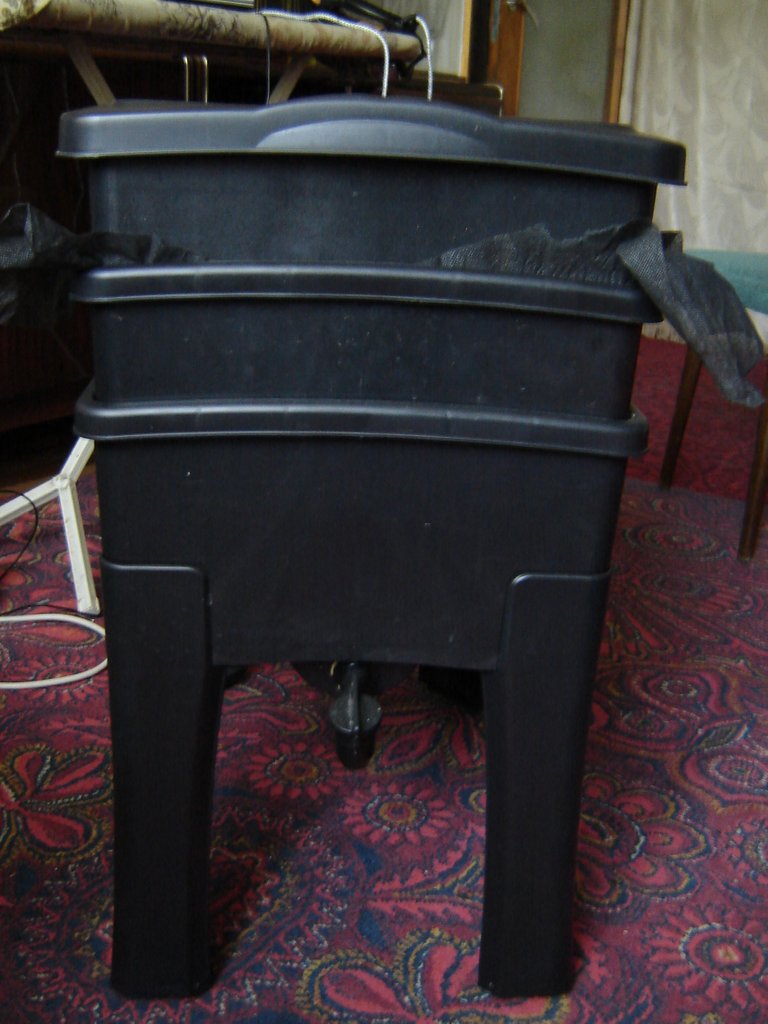
Now the worms have plenty of space - they live like at a resort! 😀
I put the vermicomposter in a corner in my room – there is nowhere else.
The vermicomposter is very convenient.
It consists of three special boxes with holes. The substrate is laid in these boxes and then compost worms are populated.

And in the lowest tier of the composter there is a tray for collecting liquid.

This liquid that flows down is a very valuable fertilizer - vermi - tea!
For worms to feel comfortable, they need darkness.
To create complete darkness, the vermicomposter is closed with a lid from above.
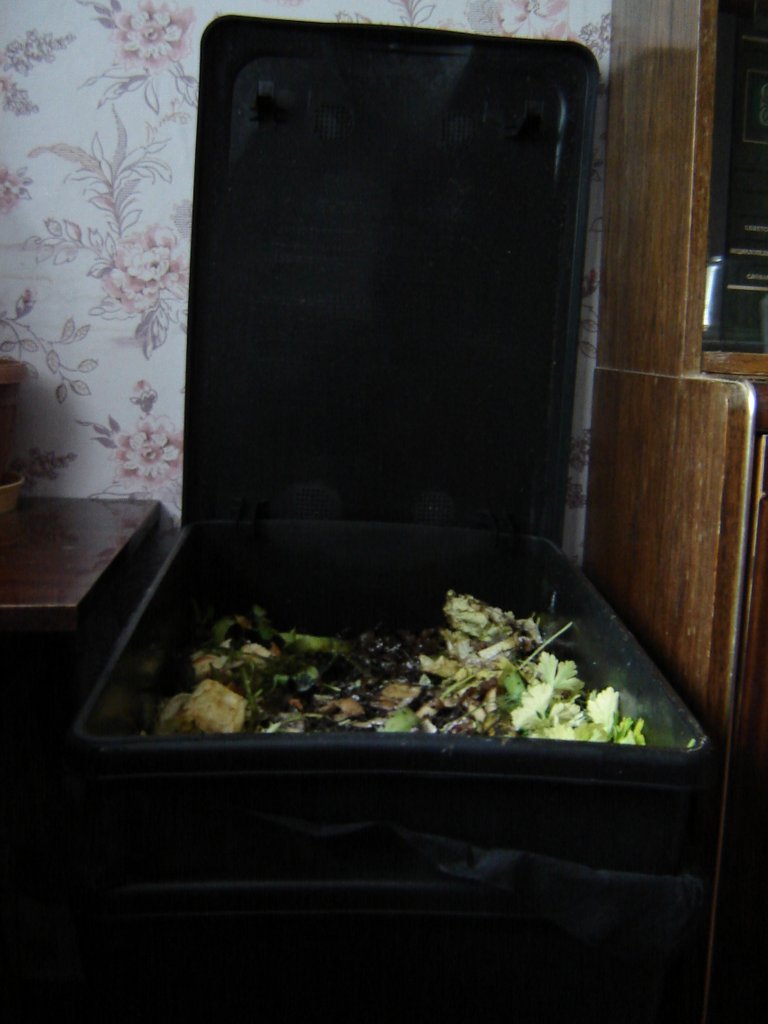
By the way, have you noticed that I have a black cloth visible from under the worm boxes?
I had to cover the bottom of the boxes with agro-fabric.
When she wasn't there, my nimble pets ran down through the holes. The worms fell into a tray with liquid and drowned...
Substrate and worm food
The main substrate for my worms are coconut fibre briquettes.
The very first coconut briquette was complete with a vermicomposture.
I soaked dry coconut fiber in a lot of water. When the substrate was ready, I laid out the coconut at the bottom of the vermicomposter drawer.
Compost worms liked this substrate. They willingly live in it, reproduce, and also ... feed on coconut fiber 😀
But I don't keep my worms on such a "dry ration"!
The main food for my compost worms is kitchen waste, cleaning from vegetables and fruits.
Here's a look at the vermicomposter – I've also thrown zucchini, potatoes and leftover greens for my pets here…
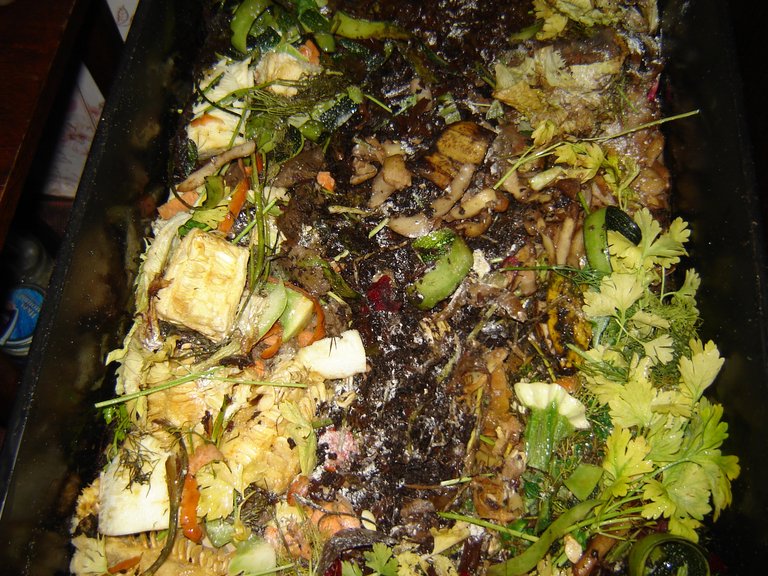
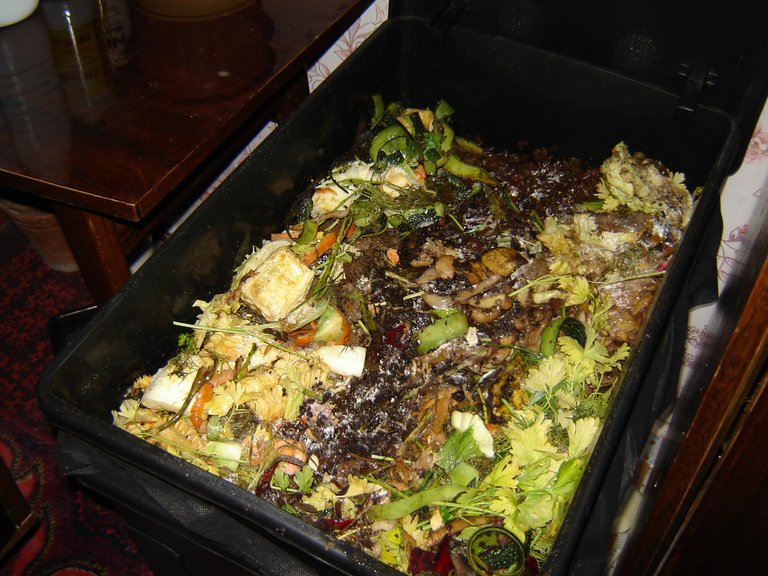
Unnecessary leaves from indoor plants, used tea leaves, used ground coffee, crushed egg shells, grass from the street and other organic matter are also suitable for food.
I used to often give my compost worms cardboard egg cartons to eat.
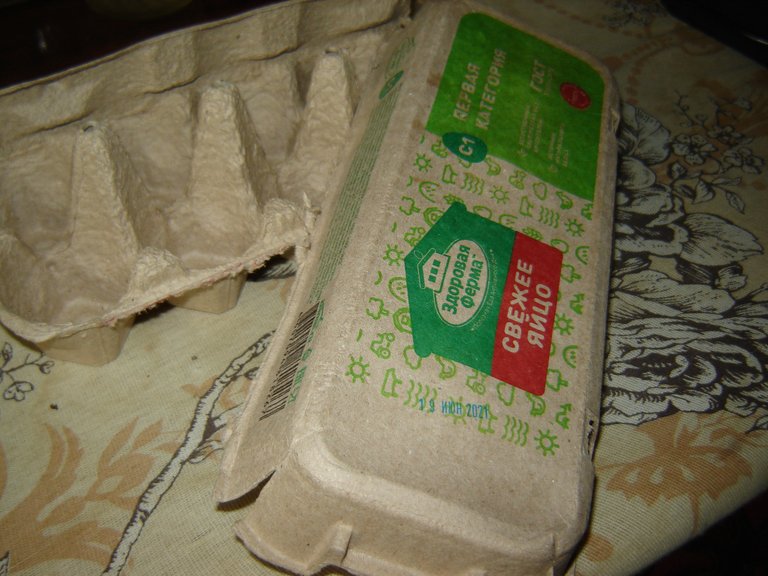

Worms "gnawed" this cardboard quite well.
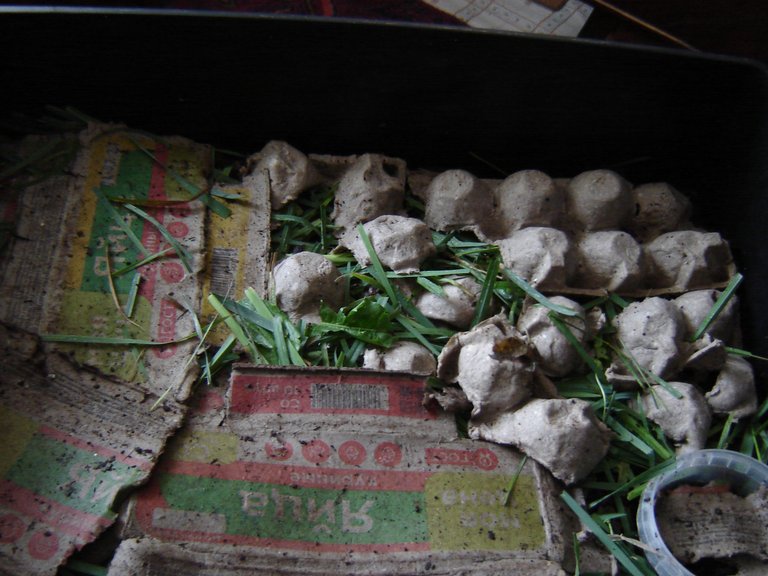
But now I rarely feed my compost worms with this cardboard.
Although it is made of recycled cellulose, it may contain harmful artificial substances.
For example, glue.
Currently, I feed my pets only with NATURAL ORGANIC FOOD!
Look at what delicious food I brought from the forest today.
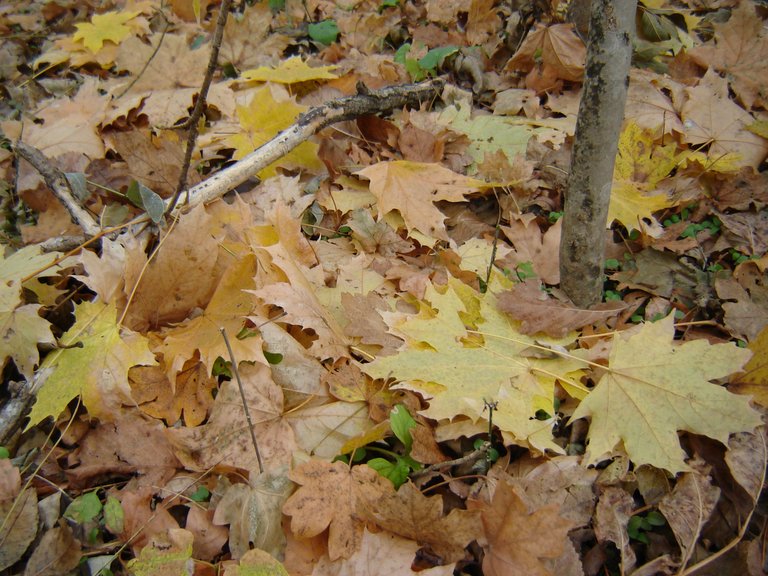
These are fallen autumn leaves.
I put the leaves in a thick layer in the composter.
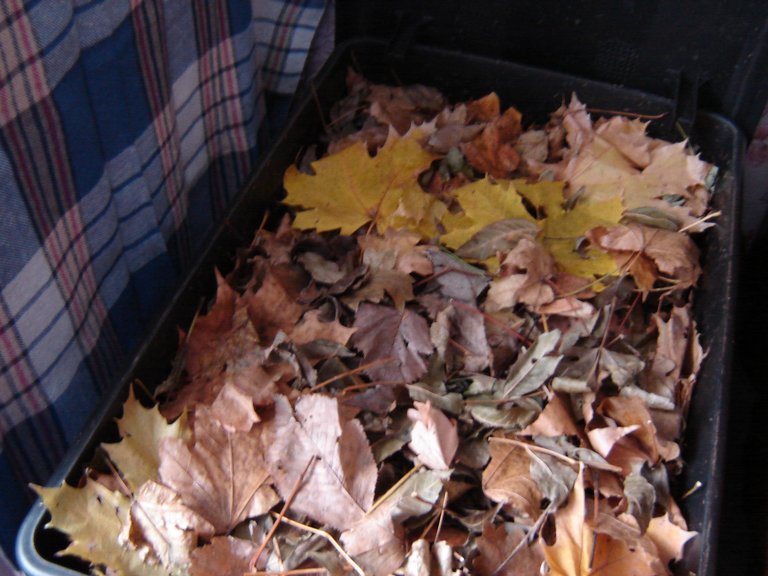
Such food will please my compost worms very much 👍
Manufacturers of Pure Vermicompost!
My compost worms produce the best and cleanest fertilizer for vegetables from the indoor garden for free.
This is a natural vermicompost!
Compost worms, feeding on decomposed organic matter, produce waste products of their vital activity - they are called "coprolites".
These coprolites are vermicompost! It contains all the useful minerals and trace elements available to the roots of plants.
Plants literally enjoy vermicompost!
Look at how much I have collected valuable black vermicompost in one year of work of my compost worms.
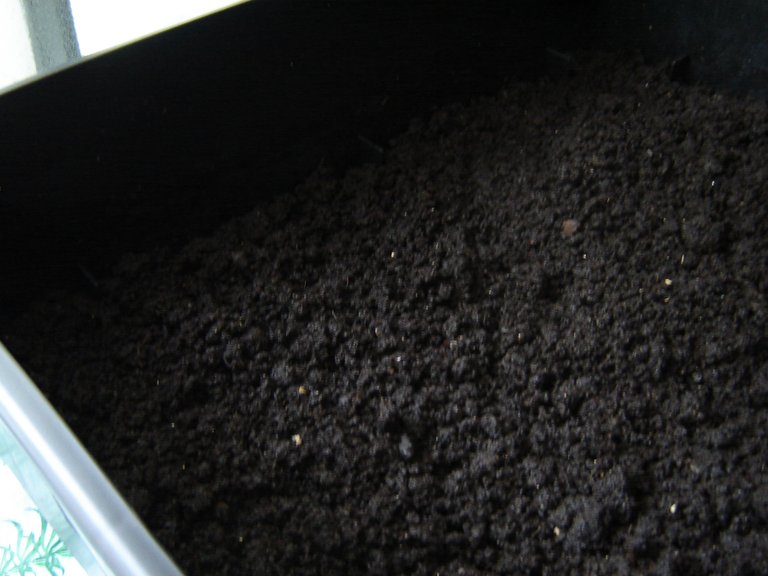
And all this wealth is absolutely free!
After all, worms recycled kitchen waste. The waste that we usually throw in the trash...
In the spring, when the season of sowing seeds of tomatoes and cucumbers for the indoor garden comes, I will add biohumus from my vermicomposter to the soil.
My pets
Ouch... It seems I forgot to introduce you to the inhabitants of the vermicomposter themselves...😊
Let's open a vermicomposter and get acquainted with the "angels of the earth".
However, they are very smart guys!
As soon as the light gets to them, they immediately dive deep, hide!
I barely caught one young worm by the tail.

That's such a handsome guy!
Once on my hand, the worm begins to flex elastically and bounce.
We release the frightened worm back home.
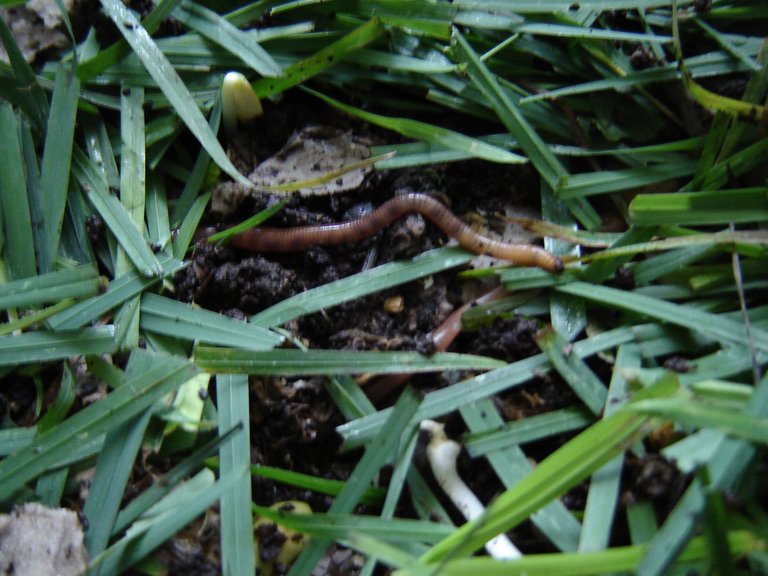
When I first started dealing with compost worms, there were no more than 100 individuals living in the vermicomposter.
But the worms, especially the red Californian ones, multiplied very quickly. And now a whole "state" of compost worms lives in the composter.
And how do compost worms multiply?
They lay cocoons. Small worms hatch from the cocoons later 😊

Do you see the little cocoon in this photo?

Friends, I told you about how compost worms live at my house.
This is an excellent source of vermicompost for my indoor vegetable garden!
Later I will tell you about the results of the use of vermicompost in the cultivation of indoor tomatoes and cucumbers.
What a fabulous post! Very helpful for gardener's. Thanks @bartolomee for such an informative read. I think many people will have a laugh at the delicious food you foraged for your pets. What do you think @craigcryptoking? Thanks for the feature of a new gardener on hive @minismallholding
Thanks! I am very glad that you liked my story!
We, people who strive for Nature, are very cool guys!
This is exactly what I need for my tiny space! Thank you for this highly informative post!
Thanks! I am very glad that you liked my story!
That's amazing! Hopefully it doesn't smell?
I should maybe have done ours indoors, because I couldn't keep them cool enough to survive summer. I don't think the family would have let me, though. 🤔
I've featured your great post in this week's Garden Journal Weekly, because I loved it so much.
Thank you for your feedback! I'm glad I liked it)))
No, the composter absolutely does not smell. I forgot to write about it in the post...
sometimes only when I opened the lid, there was a slight smell from wet cardboard.
But now I put a thick layer of leaves in the composter! And the smell from them is delicious, like in the forest)))
That doesn't sound bad at all. Like bringing the forest into your home. 😊
Мне всегда хотелось завести калифорнийских червей, но чтобы выращивать их и получать большое количество биогумуса, это у меня в пенсионных планах.
Да, Лика, я не жалею, что в свое время купила этот австралийский компостер. Это очень удобная и продуманная штука! Червям в нем нравится)))
А где ты покупала червей. Я как-то лет 25-28 назад пыталась купить, и даже с мужем ездили за 220 км от нас к одному человеку, но по приезду он так нам их и не продал. Потом как-то и охота пропала их покупать. Компоста у нас в деревне и так хватает.
У меня сейчас две породы. Первых, дендробену, я покупала по объявлению с Авито, у мужика. Он их разводит для рыбаков. Дендробена классный червь, крупный. Но ооочень медленно размножается.
Тогда я купила в магазине для рыбаков коробочку с красными. Там всего то штук 30 было, мелкие. Но они плодятся как бешеные, и жрут все подряд)))
Дендробена - та поблагородней будет))
Я вот все сидела и думала, а если их просто накопать в огороде. У меня дождевые после дождя вылазят и земли, большущие, может сантиметров по 20-25 и жирные.
Просто я когда почитала технологию получения гумуса в компостных ямах с помощью калифорнийских червей, то мне сразу расхотелось их разводить и использовать. А вот в таких компостерах конечно можно делать, но только в маленьких масштабах, для комнатных цветов например.
Я вот недавно на зиму снимала верхний слой земли в горшках и подсыпала новый, то делала смесь 1х1х1 (компост из навоза, торф и покупной грунт для цветов)
Wow! This is amazing. I have that exact same worm cafe! Except I use it as chicken nesting boxes now ahahah - as I have a big worm bathtub. I think it's great you are growing them in your apartment - a great compost system for when you don't have much space! Thanks so much for sharing!
Thanks! I am very glad that you liked my story!
Yay! 🤗
Your content has been boosted with Ecency Points
Use Ecency daily to boost your growth on platform!
Support Ecency
Vote for Proposal
Delegate HP and earn more, by @bartolomee.
Cool
Man, first welcome to our community, that was so informative, I attempted a worm farm last year and failed, the several layers like you did, is probably the cleanest, and best way to do it.
Did you make it yourself?
I am still staggered by the brilliance of your post, with the compost tea tap are you kidding me?
Also where did you pick your worms? You took them randomly? Also, how about the smell of the decomposing veggies, I tend to leave mine outside , then give it to the chicken (they love worms too ahaha).
Anyway thanks, amazing!
It was very useful to me!@riverflows Thank you so much for the prize!